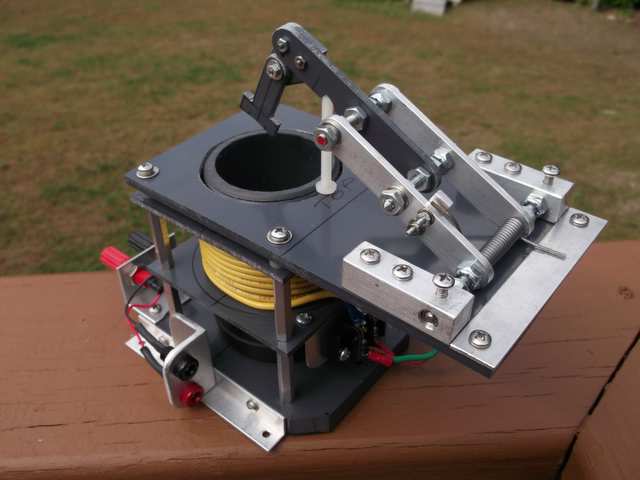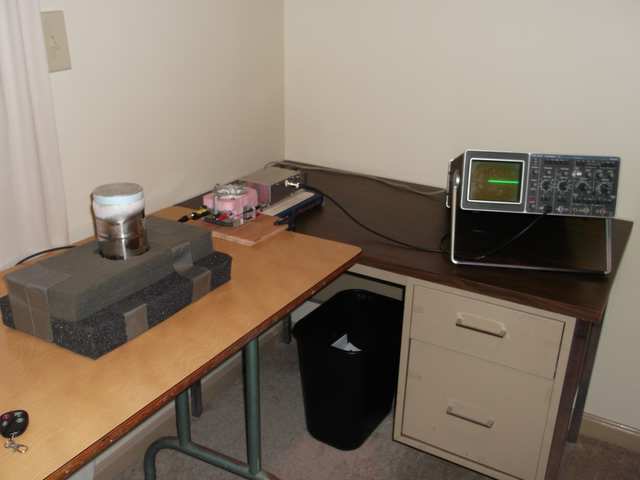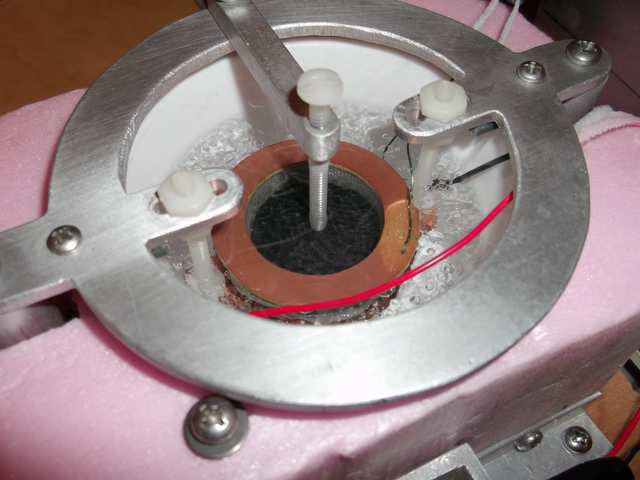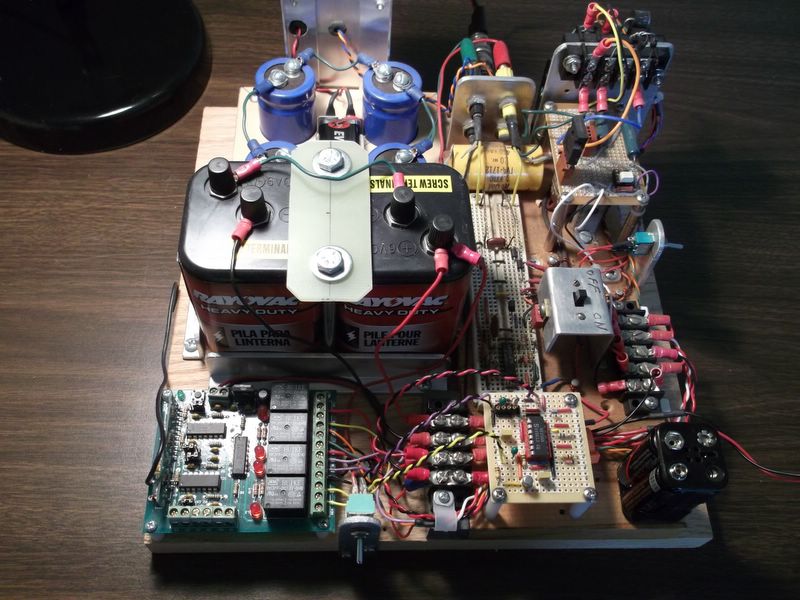Experiment History
While the concept of "gravity shielding" has long been discounted on theoretical grounds (incompatible with General Relativity), creation of transitory acceleration pulses via quantum processes may explain any genuine signal that was observed. Based on a theoretical idea about the nature of matter waves, only acceleration of the bulk superconductor, supercurrent, or superfluid will produce an acceleration signal, and then only for the duration of the acceleration. Thus the experiments have, to some degree, replicated Podkletnov's "Impulse Gravity Generator", which would indeed have sharply accelerated the supercurrent. For the record, in a series of experimental runs in late March, 2010, apparent acceleration pulses were detected with a PM-3214 oscilloscope. The scope was triggered by the accelerometer's output, every time a 40 mfd capacitor, (charged to 300 volts), was discharged through the superconductor. Control runs seemed to rule out electromagnetic pulses (EMPs) as the culprit, but more runs are needed under identical conditions.
An improved set-up, pictured on the index page, has most of the experimental components secured to an 11 by 11 by 3/4 inch oak platform. The control box, with cable leading to the high voltage circuit, has been replaced by a 433 MHz RF link, that allows charging and discharing of the capacitor bank remotely. The small remote, on a keychain, is visible on the right side of the photo. This eliminates the danger of having nearly 1000 volts accidentally reaching the hand-held control box. The aluminum project box, in the foreground, houses the accelerometer and associated circuitry. To its left is the cryostat with slidable fiberglass tabs supporting the anode and superconductor. A kit LCD voltmeter has been mounted on a vertical metal frame for monitoring the charging voltage. Only two of the four relays are used; one for starting and stopping capacitor charging, the other to trigger discharge through the superconductor load.
An ADXL203, plus/minus 1.7g accelerometer chip (resolution 1 milli-g), aligned with the supercurrent axis, monitors for signal. It is enclosed in a 2" by 4" by 6" aluminum project box for RF (radio frequency) isolation. The accelerometer's output is first referenced to analog common in a 5 volt, bi-polar supply; established by 7805 and 7905 regulators, that, in turn, are fed by a pair of 9 volt batteries mounted outside the case. The second op-amp on the 747 chip provides a 10-to-1 signal gain. Shielded coax cables both within the box to through-panel BNC connectors, and from the box to the oscilloscope adds further RF isolation. Signals can be tapped either directly from the ADXL203's output, from the referencing stage, or the final amplifier output.
Using a solid state accelerometer overcomes a pitfall in previous attempts to measure acceleration phenomena from superconductors with a digital scale and target mass. Any brief acceleration pulse would have been averaged over the sampling interval of the digital scale, and further diluted by the large inertial mass of the target. Moreover, negative results would be expected for a static superconductor, in which the bose-condensate is not being accelerated, if the theory presented here is correct. Back in 2010, electric discharge directly through the superconductor was the sole method tried, and hasn't been attempted since. The YBCO superconductor, which yielded signals by this method, was accidentally ruined when silver epoxy was applied to both sides of it, in an effort to obtain electrical contact over its entire surface. Therefore a coil was wound on a fiberglass cylinder slightly larger than the superconductor. Discharging the capacitor through this coil induces a circulating supercurrent in the the tangential plane of the superconductor.
The induction method was tried in late May of 2010, with interesting results. In the superconductive state the PM-3214 scope was triggered, by the accelerometer's output, in multiple runs when the 40 mfd capacitor was discharged through the solenoid. Scope triggering was not observed after the YBCO chip transitioned into its non-superconducting state. Tried various combinations to duplicate triggering, but only 300-350 volts discharge from 40 mfd capacitor, with YBCO chip in superconductive state, produced results in 3 runs. While tantalizing, since the triggering was close to the noise threshold of the system, it's not irrefutable proof of anamalous phenomena. Tests with a non-superconducting aluminum blank were carried out in early June, 2010, and did not duplicate the triggering effect seen with the YBCO chip in the superconductive state.
It is now late January, 2015. Numerous experimental runs were conducted between 2010 and 2014, but only with small, warped, 1 inch YBCO discs. As in 2010 capacitors were discharged through a coil surrounding the superconductor to induce a supercurrent. In Spring of 2014 the electronics was modified allowing isolation of the acoustic 'pop' that occurs when 1 megawatt plus of power is discharged through the induction coil immersed in the liquid nitrogen.
 |
 |  |
 |
Copyright 1998, David Sears Schroeder |